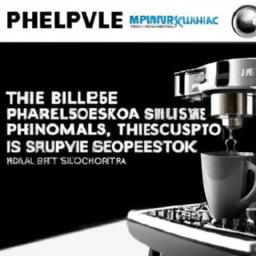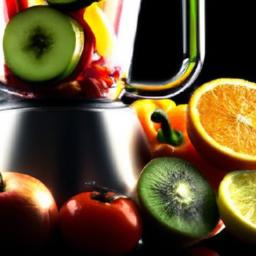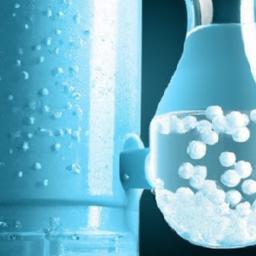Stainless Steel vs Glass French Press: Finding Your Ideal Coffee Companion
Selecting the ideal French press is like choosing a champion for your daily coffee ritual-between sleek stainless steel and timeless glass, which one earns the title for your perfect cup? At How To Cook Gourmet, we explore this friendly rivalry, focusing on durability, heat conservation, style, and maintenance to help you decide.
Durability and Heat Performance: The Steel Advantage
Stainless steel French presses appeal to those who prize resilience and heat retention. Engineered for rugged kitchen use, stainless steel models withstand knocks and drops that would shatter glass counterparts. Thanks to insulated walls, these presses maintain your coffee’s warmth for extended periods, ideal for slow sippers or those who enjoy multitasking with their mug.
- Robustness: Practically unbreakable and ideal for households with kids or frequent travelers.
- Superior Heat Retention: Acts like a thermos, preserving temperature and flavor longer.
- Contemporary Aesthetic: Often polished to a glossy shine, fitting modern kitchens.
- Portability: Lightweight variations exist, perfect for camping or commuting.
One tradeoff is that you can’t visually gauge how much brew remains inside, unlike the transparent glass. However, this can add a subtle mystique to your coffee routine.
| Feature | Stainless Steel | Glass |
|---|---|---|
| Fragility | No | Yes |
| Heat Retention | Excellent | Moderate |
| Visibility of Coffee | No | Yes |
| Weight | Typically lighter | Heavier |
| Style | Modern industrial | Classic and elegant |
Glass French Presses: A Visual Brew Experience
Glass French presses captivate with their transparency and delicate grace. Watching the coffee bloom and swirl as it steeps allows for a sensory coffee-brewing experience. However, their inherent fragility demands careful handling, and thinner glass walls cause quicker heat loss, which might disappoint those who enjoy lingering over their cup.
- Heat Disadvantage: Single-wall glass dissipates heat rapidly, failing to maintain optimal drinking temperatures.
- Visual Appeal: The rich hues of coffee become part of the aesthetic enjoyment.
- Care Caution: Delicate design means risk of chips or cracks if mishandled.
For those who drink coffee immediately after brewing, glass is perfectly suited. To prolong warmth, many coffee lovers employ accessories like fabric cozies or thermal wraps, although these offer limited insulation.
| Feature | Glass Press | Stainless Steel Press |
|---|---|---|
| Heat Retention | Low | High |
| Visual Appeal | Superb | Good |
| Durability | Fragile | Highly Durable |
| Weight | Light but fragile | Often heavier |
How Long Will Your French Press Last? Durability in Focus
Robustness is a key consideration-especially in a busy kitchen environment where spills and drops are everyday occurrences. Glass presses are elegant but demand gentle care, comparable to handling fine china. In contrast, stainless steel options serve as your dependable sidekick, resistant to dents and cracks, promising years of faithful use.
| Material | Durability | Pros | Cons |
|---|---|---|---|
| Glass | Low | Elegant, visually transparent | Prone to breaking, requires careful use |
| Stainless Steel | High | Long-lasting, heat-retentive, tough | Opaque, no visibility of contents |
Consider your routine: for those prone to morning haste or minor kitchen mishaps, steel is a reliable ally. If you treasure delicate brewing rituals and meticulous care, glass presses reward with exquisite visual feedback.
Flavor and Heat: Sensory Comparison
From a taste perspective, both materials preserve the authentic flavor of freshly ground beans without imparting any undesirable notes. Stainless steel presses effectively prevent any metallic aftertaste through quality construction, while glass’s inert nature guarantees purity in every cup. The critical difference lies in temperature maintenance-with heated coffee lasting longer in steel models.
| Feature | Stainless Steel | Glass |
|---|---|---|
| Heat Retention | Excellent | Moderate |
| Flavor Interference | Minimal | None |
| Durability | Highly Durable | Fragile |
| Cleaning | Moderate effort | Very Easy |
- Stainless steel is perfect for savoring coffee over time without reheating.
- Glass is ideal for those who prioritize observing the brewing process.
Cleaning: Streamlining Your Morning Brew Experience
The ease of cleanup significantly influences morning moods. Glass French presses reveal residue immediately but require cautious handling due to breakage risk. Conversely, stainless steel editions tolerate dishwasher cycles and resist accidental chipping but may demand scrubbing to maintain their polished appearance.
| Press Type | Cleaning Difficulty | Common Issues | Mental Impact |
|---|---|---|---|
| Glass | Moderate | Fragility, trapped grounds | Can be frustrating if chipped |
| Stainless Steel | Easy | Fingerprints, stubborn stains | Generally stress-free but needs polishing |
Assess your tolerance for cleanup: a quick, no-fuss wash or delicate care that prolongs your press’s life. This small factor shapes your enjoyment more than you might expect.
Design Harmony: Matching Your French Press to Your Kitchen
Your French press should harmonize with your kitchen’s décor as well as your coffee habits. Glass presses complement light, airy, or rustic kitchens where the spectacle of brewing coffee enhances the atmosphere. Stainless steel suits modern, industrial, or minimalist interiors, offering durability and a sleek look.
| Aspect | Glass French Press | Stainless Steel French Press |
|---|---|---|
| Visual Style | Transparent, elegant | Shiny, contemporary |
| Fragility | Handle with care | Built to endure |
| Temperature Retention | Rapid cooling | Long-lasting warmth |
| Weight | Light yet delicate | Heavier but sturdy |
Reflect on your kitchen setting and personality-clumsy and practical or methodical and aesthetic-and find the perfect match.
Pricing Insights: Investment vs Longevity
Price is a crucial factor when comparing these two styles. Stainless steel French presses generally command a higher price point ($40 to $100), justified by their endurance and heat efficiency. Glass models are more affordable ($15 to $50) but may require replacement sooner due to their fragility.
| Consideration | Stainless Steel | Glass |
|---|---|---|
| Average Cost | Moderate to High | Low to Moderate |
| Durability | Long-lasting | Prone to breakage |
| Heat Keeping | Superior | Limited |
| Maintenance | Usually dishwasher friendly | Fragile, needs careful cleaning |
- Frequent drinkers may find value in the durability of stainless steel.
- Occasional users comfortable with gentle care benefit from the elegance and affordability of glass.
Which French Press Aligns With Your Coffee Habits?
Choosing your next French press boils down to your lifestyle:
| Feature | Glass | Stainless Steel |
|---|---|---|
| Heat Retention | Lower | Higher |
| Durability | Fragile | Robust |
| Sensory Experience | Watch coffee bloom | Modern design, warm brew |
| Portability | Light but delicate | Often travel-friendly |
| Cleaning | Simple with care | Dishwasher-safe options available |
Do you cherish the artistic process of brewing, or is practical warmth your priority? Both materials serve different rituals magnificently.
FAQs: Addressing Common Questions
Q: How does the material affect my coffee’s temperature?
A: Stainless steel outperforms glass in keeping your coffee warm, often 30-60 minutes longer depending on insulation quality.
Q: Will stainless steel give my coffee a metallic taste?
A: High-quality stainless steel presses are designed to be flavor-neutral, ensuring no metallic aftertaste.
Q: Which press is easier to clean?
A: Glass shows residue immediately and is fragile, requiring gentle cleaning. Stainless steel may require more scrubbing but withstands dishwasher cycles better.
Q: Is one safer for clumsy users?
A: Definitely stainless steel-it’s less likely to shatter if dropped.
Q: Can I get the best of both worlds?
A: Yes, some models combine stainless steel insulation with a glass exterior, offering durability and visual clarity.
Conclusion: Tailoring Your French Press Choice
Both stainless steel and glass French presses bring distinct benefits to your coffee routine. Stainless steel excels in durability and heat preservation, perfect for those who savor their cup slowly or require rugged equipment. Glass French presses offer a charming visual journey through brewing but demand gentle use and prompt drinking.
Your choice should align with your style, drinking habits, and kitchen environment. At How To Cook Gourmet, we believe understanding these nuances enriches your coffee experience. So, will you embrace the enduring warmth of steel or the elegant transparency of glass on your next brewing adventure?





